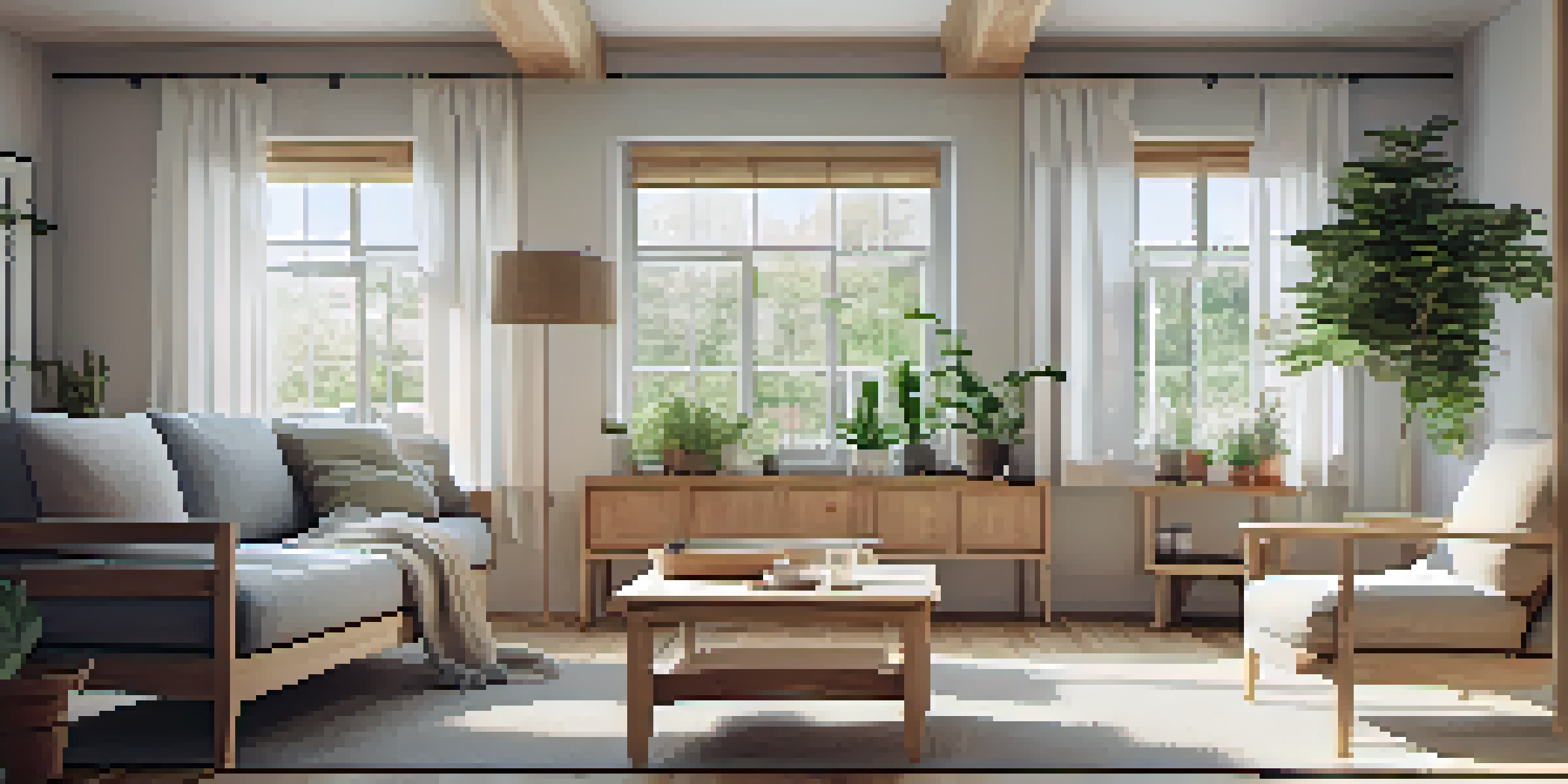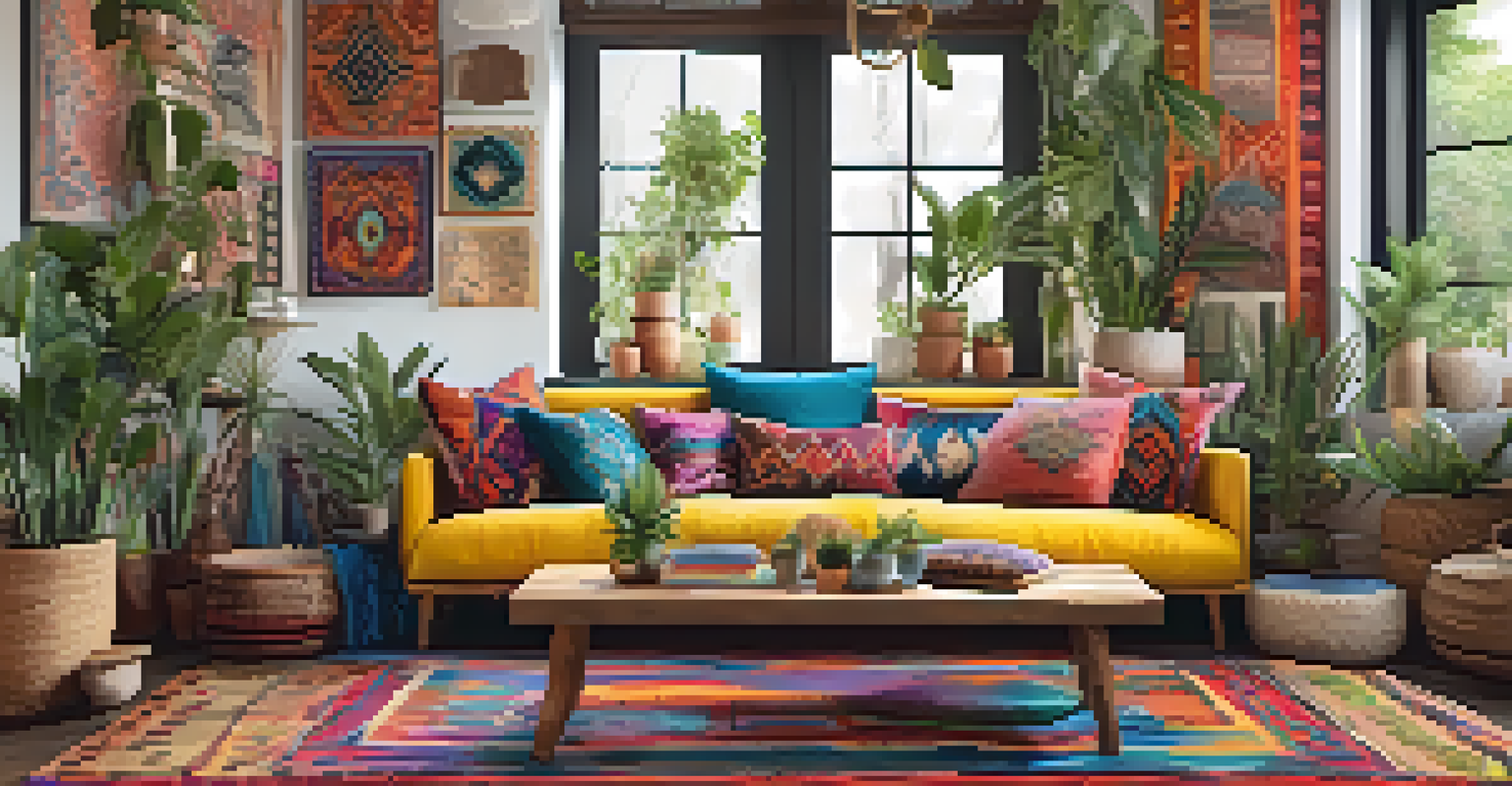The Influence of Historical Styles on Modern Interior Trends

Understanding Historical Styles in Interior Design
Interior design has a rich tapestry woven from various historical styles, each leaving a distinct mark on aesthetics. From the ornate details of Baroque to the minimalist lines of Mid-Century Modern, these styles reflect cultural values and technological advancements of their time. As we delve into the past, we can see how these styles have evolved and influenced contemporary design choices.
Good design is a lot like clear thinking made visual.
By studying historical styles, designers gain insight into the elements that resonate with people. For instance, the warm, inviting nature of Arts and Crafts movement encourages a connection to craftsmanship and natural materials. This appreciation for quality and authenticity continues to inspire modern trends, as homeowners seek comfort and individuality in their spaces.
Moreover, historical styles often serve as a foundation for new trends, leading to innovative interpretations. Designers frequently borrow motifs or color palettes from the past, blending them with modern sensibilities to create fresh, timeless designs. This interplay between old and new is what keeps interior design dynamic and relevant.
Victorian Elegance: A Source of Modern Inspiration
Victorian design, with its intricate patterns and rich textiles, has made a significant comeback in recent years. Many modern interiors are now embracing the elegance of this era, characterized by heavy drapery, ornate furniture, and layered textures. This revival reflects a desire for opulence and comfort, echoing the Victorian emphasis on creating inviting spaces.

One notable trend inspired by Victorian design is the use of bold color palettes. Shades like deep greens and burgundies are being reintroduced in contemporary homes, alongside luxurious fabrics like velvet and brocade. These choices not only add depth to a room but also evoke a sense of nostalgia, reminding us of a time when interiors were richly adorned.
Historical Styles Shape Modern Design
Understanding historical styles like Victorian and Art Deco helps designers create contemporary spaces that resonate with cultural values.
Additionally, the Victorian penchant for eclecticism encourages homeowners to mix and match styles. Modern interpretations of Victorian aesthetics often incorporate vintage pieces with contemporary furniture, creating a unique and personal space. This blend of old and new not only showcases individual taste but also honors the craftsmanship of the past.
Art Deco: Glamour Meets Functionality
The Art Deco movement, known for its bold geometric patterns and luxurious materials, continues to influence modern design. This style embodies a celebration of glamour and sophistication, making it a favorite among today’s designers. Elements such as mirrored surfaces, metallic accents, and streamlined forms are making a resurgence in contemporary interiors.
Design is not just what it looks like and feels like. Design is how it works.
Incorporating Art Deco elements can transform a space into a chic oasis. For example, a statement chandelier or an artfully designed coffee table can serve as focal points, adding a touch of elegance to any room. The key is to balance these striking features with more subdued decor to maintain a harmonious atmosphere.
Moreover, the practicality of Art Deco design aligns well with modern lifestyles. Its emphasis on clean lines and functional beauty resonates with homeowners looking for stylish yet practical solutions. By embracing this era, today’s interiors reflect both a sense of luxury and a commitment to everyday usability.
Mid-Century Modern: Timeless Appeal
Mid-Century Modern design remains a powerful influence in contemporary interior trends, celebrated for its simplicity and functionality. Characterized by organic forms, natural materials, and a seamless connection to the outdoors, this style appeals to a wide audience. Its timeless nature means it works well in various settings, from urban apartments to suburban homes.
The open spaces and minimalistic approach of Mid-Century Modern design encourage a sense of freedom and airiness. Many modern homes are now designed with open floor plans that mirror the fluidity of this style, creating environments where family and friends can gather comfortably. This design philosophy promotes a lifestyle centered around connection and relaxation.
Eclecticism Celebrated in Interiors
Modern design embraces eclectic styles, allowing homeowners to blend vintage and contemporary elements for personalized spaces.
Additionally, the emphasis on sustainability in Mid-Century Modern design aligns with current trends toward eco-friendliness. Many contemporary designers are inspired to use reclaimed wood and sustainable materials, echoing the spirit of this era. This blend of style and responsibility makes Mid-Century Modern a perfect example of how historical influences shape modern trends.
Industrial Chic: The Legacy of Warehouse Living
The Industrial style, born from the repurposing of warehouses and factories, has significantly shaped modern design trends. With its raw materials, exposed brick, and open spaces, this aesthetic captures a sense of urban authenticity. Today, many homeowners embrace this look, finding beauty in the unrefined and the practical.
What sets Industrial design apart is its emphasis on functionality over ornamentation. Furniture pieces often double as storage solutions, reflecting a modern need for practicality in living spaces. This blend of style and utility resonates deeply with those who appreciate a minimalist approach without sacrificing character.
Furthermore, the Industrial style encourages a blending of various elements, allowing for unique and personal expressions. By mixing vintage industrial pieces with modern decor, homeowners can create spaces that tell their stories. This versatility illustrates how historical styles can adapt to contemporary needs and preferences.
Scandinavian Design: The Influence of Minimalism
Scandinavian design, with its focus on simplicity, functionality, and natural light, has become a cornerstone of modern interior trends. Its clean lines and muted color palettes create a serene atmosphere that many find appealing. This style promotes a sense of calm and order, aligning perfectly with today’s fast-paced lifestyle.
A key feature of Scandinavian interiors is the use of natural materials, such as wood and wool, which enhance warmth and comfort. By incorporating these elements, modern homes evoke a sense of coziness, often referred to as 'hygge' in Danish culture. This concept of comfort is increasingly sought after in contemporary living spaces.
Sustainability in Design Trends
Current interior trends prioritize sustainability, with styles like Mid-Century Modern and Bohemian emphasizing eco-friendly materials and practices.
Moreover, Scandinavian design emphasizes the importance of decluttering and maximizing space. Furniture is often multi-functional, allowing for efficient use of smaller living areas. This practical approach to design ensures that homes remain stylish while also accommodating the demands of modern life.
Bohemian Style: A Modern Take on Eclecticism
The Bohemian style, known for its vibrant colors and eclectic mix of patterns, has gained popularity in recent years. This trend encourages personal expression and the mixing of various cultural influences, allowing individuals to showcase their unique tastes. Modern Bohemian interiors often feature layers of textiles, handmade decor, and a variety of textures that create a warm and inviting atmosphere.
One of the most appealing aspects of Bohemian design is its freedom. Unlike more structured styles, Bohemian interiors celebrate imperfection and individuality. This encourages homeowners to curate their spaces with items that hold personal significance, whether it's a vintage rug from a flea market or a piece of art from a local artist.

Additionally, the emphasis on sustainability in modern Bohemian design aligns with a growing awareness of ethical consumption. Many individuals are now opting for second-hand or handmade items, which not only adds character to their homes but also supports local artisans. This blend of style, sustainability, and personal expression makes Bohemian design a compelling choice for today's interiors.